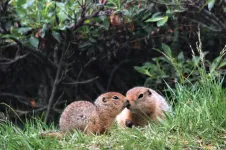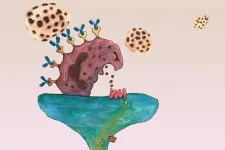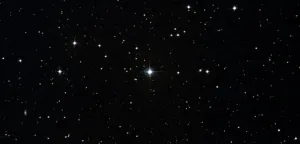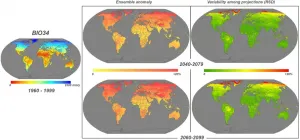In 2020 that is where the married couple was when the COVID-19 pandemic took hold of the world, and compelled them to extend their stay in the virus-free forest until the fall, when they felt safe enough to travel back to their other home in Philadelphia.
"With modern laptops and internet, we could watch the world go by from the safety of the forest," says Janzen, a biology professor in the School of Arts & Sciences.
The extra time in the forest gave them added time for reflection, some of the fruits of which appear in a piece published this week in the Proceedings of the National Academy of Sciences, part of a special issue on global insect decline.
Their contribution draws on data collected since the 1970s on insect abundance and diversity in the tropics, as well as on observations about climate change that go back even further. Although the ACG's protected status has effectively eliminated certain threats to biodiversity loss, such as fire, hunting, deforestation, and pesticide use, the creatures that dwell there are not exempt from what Janzen and Hallwachs call the "heterogenous blanket" of climate change effects.
"What we have seen and lived since the mid-1970s, unambiguously, in our Costa Rican tropical wild world is that the biomass and species richness of insect individuals and species, and their interactions with everything, are decomposing," they write.
To respond to this decline, the scientists have focused their efforts locally. Keeping track of the effects of climate change through consistent monitoring is essential, they say, but what even more critical is engaging the people who own the preserved land: all five million Costa Ricans, in this case. Janzen and Hallwachs are internationally known for their work on this front, having created a model in ACG that empowers and employs local people in conservation work and attempts to facilitate the movement of these processes throughout the national park system and abroad.
In their article, the researchers describe a new approach to expand on these successes: BioAlfa, a nationwide program designed to enlist Costa Ricans themselves in hands-on learning and research about their nation's wild ecosystems. The initiative's name comes from the Spanish for bioliterate, "bioalfabetizado."
"The tradition in tropical countries is that when you want to know something about the biology of your country, expeditions from the North come and do studies of one sort or another and then they take the information home with them," Janzen and Hallwachs say. "What we said is, 'Look, you're capable of doing this all yourselves. You can find all the bugs and the plants and the birds and everything in your own country and, in the process, learn about them.'"
Measuring climate's toll Janzen and Hallwachs never intended to explicitly study climate change. But its effects have been impossible to ignore. They note that in the 1980s cloud cover was a constant presence over the aptly named cloud forests of ACG, shrouding peaks like Volcán Orosí and Volcán Cacao. Yet the cloud layer shrank by the 1990s and now,many days pass with no cloud cover whatsoever. The result is a drying of forest ecosystems to the detriment of insects and other wildlife that thrive in damp leaf litter and moist conditions, to say nothing of the drying waterways that used to adequately irrigate flatland crops and other development.
The ACG now experiences far more days of temperatures that approach and exceed 90 degrees Fahrenheit than it did in past decades. In addition, a prolonged dry season and greater irregularities in rainfall amount and timing compound the stresses on the biodiversity that lives there. Essentially all tropical organisms use weather cues to guide their lives, and when these change and fracture everyone takes a hit.
Janzen and Hallwachs note that these climatic perturbations have extracted a price on insect biodiversity, a bellwether for impacts on the food web bottom to top. In their report, they compare photos from moth surveys--conducted at night by using a bright light to attract moths to a light-colored sheet, where they can be counted--that indicate a dramatic drop in both moth numbers and species diversity since the 1980s.
Looking at a different types of insects, they say that, despite a constant search effort by ACG's on-the-ground staff of trained and experienced neighbor researchers, the overall number of caterpillars found during regular surveys has fallen in half since 2005, a clear sign of decline.
Supporting this finding, when caterpillars are found, they are now less likely to be parasitized by another insect species. About a fifth of caterpillars were found parasitized in 1985; that has fallen to just 5% in recent years. While this may be a good thing for individual caterpillars, it's a worrying sign overall. Because parasites are hyperspecialized to associate with particular caterpillar species, Janzen says that this lack of parasitized caterpillars suggests that caterpillar numbers are so few that the parasites are unable to locate their desired species and maintain their populations.
"When caterpillar density goes down, the parasites go extinct faster," Janzen says. "So now you've lost that carnivore. And you repeat that a thousand times, 10,000 times."
Being 'kind to the survivors' Mitigating climate change can be an overwhelming task, and Janzen says that "little guys"--like the economically-small but biodiversity-big country of Costa Rica--are unlikely to make a big-picture impact, except by example. In his eyes, it's essential for small tropical nations to focus energy on creating the conditions that enable the survivors of climate change to maintain a foothold. And that is where BioAlfa comes in.
While international conservation groups contribute money to preserve land in lush, biodiverse locales, such as ACG, the researchers argue that gaining buy-in from all levels of the owners of that preserved land, rather than outsiders who may never step foot in the country, is a necessary ingredient in tropical conservation.
"Charismatic vertebrates, tourist snapshots, and marketable big tree trunks are not even 0.001% of tropical biodiversity," Janzen and Hallwachs write. "The millions to billions of species, and billions of wild interactions still viable, are largely invisible without bioliteracy."
That's why underscoring bioliteracy is the foundation of BioAlfa. The Penn scientists' vision is that, just as elementary school children are taught to read, they should also be taught about the biodiversity around them, and not just in a classroom but by going on the land and learning by doing. And like reading, this knowledge becomes something one takes into whatever social sector becomes home.
This enhanced bioliteracy would then feed back into conservation, they say. Not only might a greater understanding of ecosystems among Costa Ricans translate into greater appreciation but concrete results by using biodiversity information wherever they are. Specifically, Janzen and Hallwachs want to expand the practice of having local researchers carry out their DNA barcoding work, in which species are identified by sequencing stretches of their genetic material.
While the Costa Rican government has committed to the idea of BioAlfa, fully fleshing it out over 10 years will take an estimated $100 million, a hefty sum that Janzen and Hallwachs hope can come from both international governmental and private sources.
"Right now Costa Rica has the political permission for this project, but it also needs the financial permission," says Janzen.
For their part, the couple continues to plug away at building their biodiversity inventory and studies in ACG, while sharing their successes at international meetings (for now virtually), hoping that other tropical nations will follow in their footsteps, protecting land to, in the words of their scientific paper, "be kind to the survivors" of climate change.
As soon as they're vaccinated for the coronavirus, Janzen and Hallwachs plan to be back on the ground in Costa Rica, continuing to pursue that goal.
INFORMATION:
Daniel Janzen is professor of biology and Thomas G. and Louise E. DiMaura Term Chair in the School of Arts & Sciences' Department of Biology at the University of Pennsylvania.
Winnie Hallwachs is research biologist in the School of Arts & Sciences' Department of Biology at the University of Pennsylvania.




